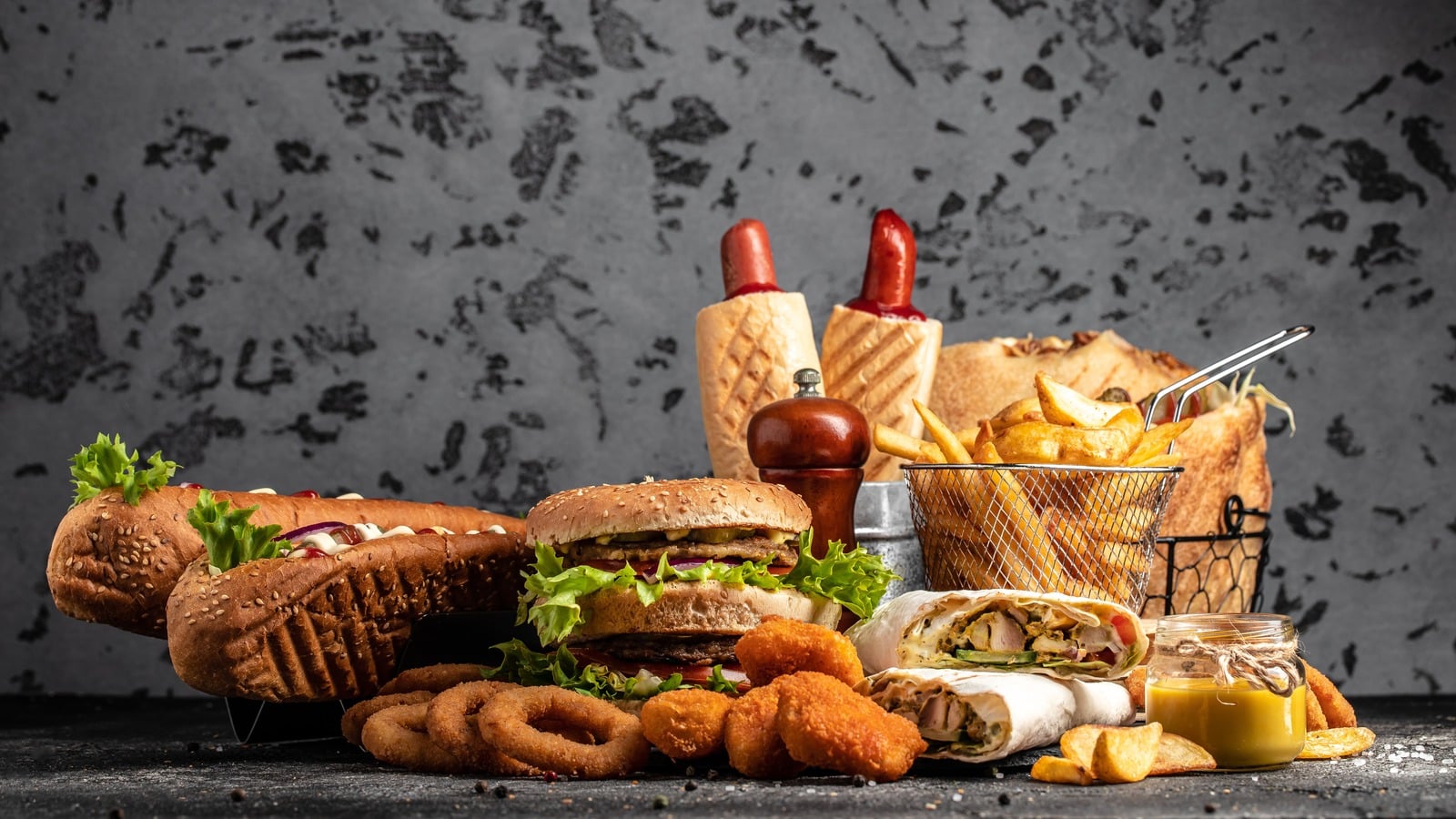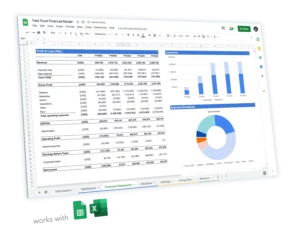50 million Americans (37% of the US population) consume fast food daily: the US is undeniable the biggest market for fast food worldwide. Yet, before you can open your own fast food restaurant, you will first need to prepare a solid business plan.
Indeed, a business plan is mandatory for any business that seeks funding from private investors or to get a loan from a bank (like a SBA loan).
In this article we go through, step-by-step, all the different sections you need in the business plan for a fast food restaurant. Use this template to create a complete, clear and solid business plan that get you funded.
1. Fast Food Executive Summary
The executive summary of a business plan gives a sneak peek of the information about your business plan to lenders and/or investors.
If the information you provide here is not concise, informative, and scannable, potential lenders and investors will lose interest.
Though the executive summary is the first and the most important section, it should normally be the last section you write because it will have the summary of different sections included in the entire plan.
Why do you need a business plan for a fast food?
The purpose of a business plan is to secure funding through one of the following channels:
- Obtain bank financing or secure a loan from other lenders
- Obtain private investments from investment funds, angel investors, etc.
- Obtain a public or a private grant
How to write your fast food’s executive summary?
Provide a precise and high-level summary of every section that you have included in the business plan of your fast food restaurant. The information and the data you include in this section should grab the attention of potential investors and lenders immediately.
Also make sure that the executive summary doesn’t exceed 2 pages in total: it’s supposed to be a summary for investors and lenders who don’t have time to scroll through 40-50 pages, so keep it short and brief.
The executive summary usually consists of 5 major sub-sections:
- Business overview: start by introducing your fast food restaurant, where it is located, how big it is (space, seating arrangement, counters, etc.) and give a brief of the fast food items (a sample menu) that you want to sell as well as their average prices. Also, mention whether you plan to open an independent fast food restaurant or a franchise restaurant instead.
- Market overview: should contain an overview of the expected market size, target audience, and demography. Also provide here a quick overview of your competitors
- People: first, introduce your fast food’s management. Provide a brief (no more than a couple of sentences each) of the experience and track record of the team. Also, speak about your hiring plans: in other words, how you intend to run the business (what are the different teams and how many employees will you hire?)
- Financial plan: how much profit and revenue do you expect in the next 5 years? When will you reach the break-even point and start making profits? You can also include here a chart with your key financials (revenue, gross profit, net profit)
- Funding ask: what loan/investment/grant are you seeking? How much do you need? How long will this last?
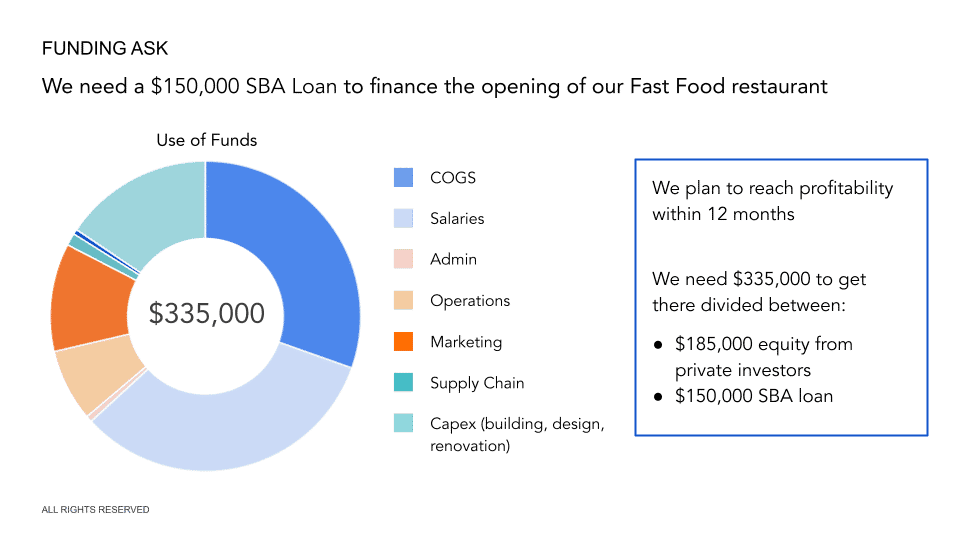
2. Fast Food Restaurant Business Overview
In this section of the business plan, you will provide details about your fast food restaurant.
You must answer here some important questions that potential investors and lenders often ask about your business and operations. Here are some examples of questions you must answer:
- What is the rationale behind your opening a fast food restaurant today?
- What’s the fast food restaurant’s location and why did you select that location?
- Why did you select the type of fast food restaurant you want to open?
- What will be the food items you will offer?
- What will be your pricing strategy and why?
- What is your expected customer footfall?
- What will be the legal structure of your company?
a) History of the Project
Any business overview must start with explaining the history of the project. There are 2 components here:
- Passion & experience of the business owner
- Rationale behind starting a fast food restaurant today
Passion & experience
You may or may not have prior experience. If you have experience, speak about it and how it will help you to run your business. For instance, you may have been a regional manager of a leading fast food brand for 5 years, and now you want to start your own fast food restaurant and use your knowledge to run it more efficiently.
Rationale
Is there a certain problem (or perhaps, a set of problems) that your fast food restaurant will try to solve when it comes into existence? For example, there may not be any fast food restaurant offering tacos and burritos while there are enough restaurants offering burgers, fries, chicken sandwiches, pizzas, etc.
But that’s not all! The market must be suitable for a business to exist and thrive. For instance, if you are trying to open your fast food restaurant offering tacos and burritos in an area where there isn’t enough demand for those food items, you may run into losses.
Similarly, if the major chuck of the target audience is between the age group of 15 to 25 with limited income, offering high-priced food will not provide the price/value relationship they seek. Offering pricey food will only stretch their budget.
The rationale behind your project must be backed up by a thorough analysis of the industry in the area where you plan to open your fast food restaurant. This is what we will cover under Market Overview further below.

b) Business Model
This section of the Business Overview should explain what type of business model and fast food restaurant you want to open. For example:
- Will you open a franchise or an independent restaurant instead?
- Will you buy an existing fast food restaurant and do some remodeling, or will you start a new fast food restaurant and design it from scratch?
- Will you go for a traditional brick-and-mortar store or will you settle for a mobile vending model to reduce overhead?
What are the different types of fast food restaurants?
There are multiple types of fast food restaurants. Some of them that you may consider include, but are not limited to:
- Burgers & Fries: In this type of fast food restaurant, you will specialise in burgers and fries, but you can also sell shakes, smoothies, etc.
- Tacos & Burritos: you may go for variations like Mexican-American fusion or original Mexican soft corn tortillas for example here
- Sandwiches
- Chicken: Your specialty may be chicken based. For instance, you can sell fried chicken, chicken sandwiches, etc.
Apart from food-based selection, you can also choose whether you want to open a sit-in restaurant, drive-through or food truck instead.
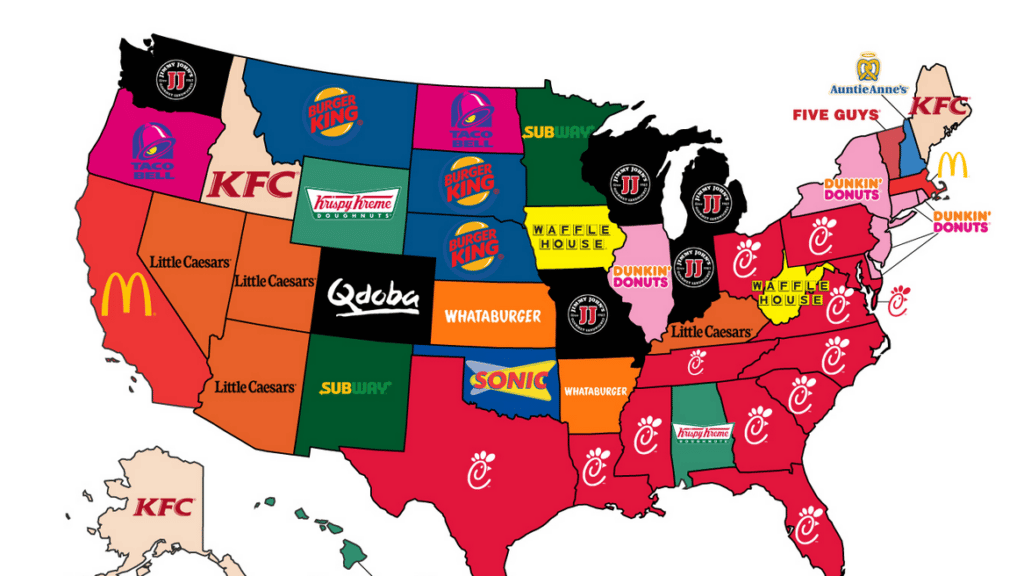
c) Products & Services
It is needless to say that the products that you will sell through your fast food restaurant will depend on the type of restaurant you are opening. So give here an overview of the menu you will offer your customers. Yet, if there are too many products, highlight the main ones and save the rest for the appendix instead.
Another important thing that you must mention is how you are going to source the products. For example, if you are opening a burger and fries restaurant, will you be baking the buns yourself or buying mass-produced buns?
Finally, a fast food restaurant is all about delivery speed. People visiting these restaurants are busy and usually don’t have the luxury of sitting for long durations. You can still add a few services like mobile and laptop charging areas (those who visit your restaurant), home or office delivery for super-busy folks who can’t step in, etc.
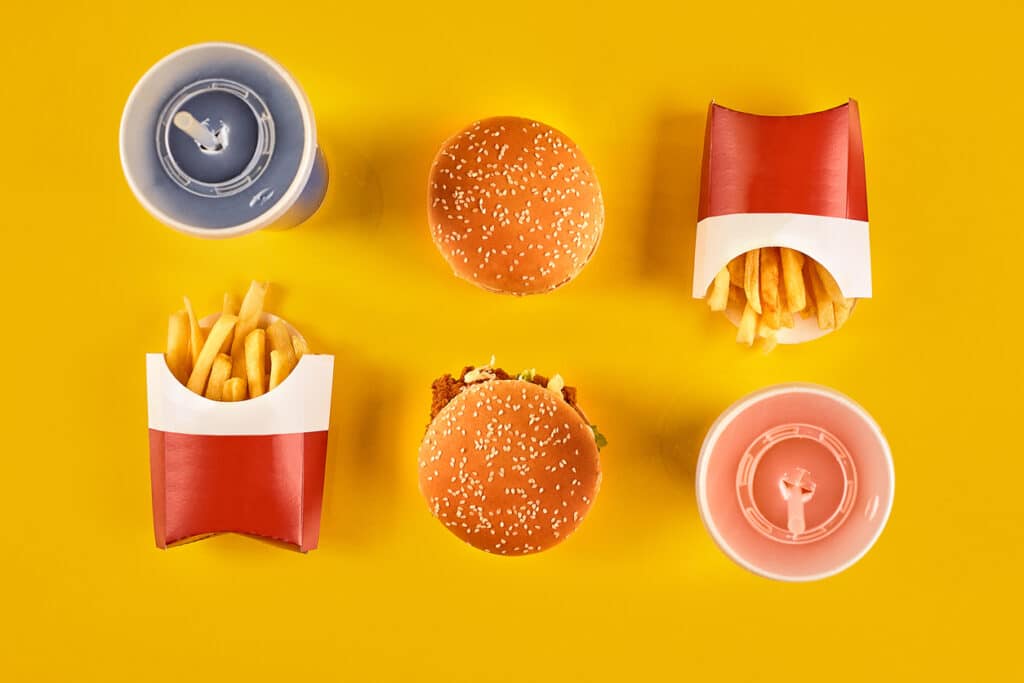
d) Pricing Strategy
Strategy
This is where you will provide an overview of your pricing strategy. For instance, you may sell the products at a lower price point than your competitors because you enjoy a bulk purchase discount from the product supplier.
Again, product quality matters. For example, if you are using organically farmed products, you may charge higher than your competitors. Similarly, if you are creating something super unique, you may charge extra. The size and quantity also factor in. Think of the Quadruple Bypass Burger or the Octuple Bypass Burger of the Heart Attack Grill which cost $20.25 and $29.80 per burger.
Your pricing strategy will also significantly depend on the spending capability of the target audience in your area of operation.
For example, if you are trying to sell super high-quality fast food products in a neighborhood where the target audience is major students, teens, and day laborers with no, limited, or fixed income, highly-priced products may not sell well. Thus, you must always factor in the spending power of your target audience while developing your pricing strategy.
Pricing table
It’s always good practice to create a pricing table to provide price ranges for your products. Yet, you don’t need to provide exact pricing for each product.
For example, if you are selling different variants of beef burgers, you don’t need to list each burger. Instead, just mention something like: Beef burgers – $7.50 to $15.50.
Offering a pricing chart is important as it will allow investors to tie your pricing strategy with your financial projections later on.
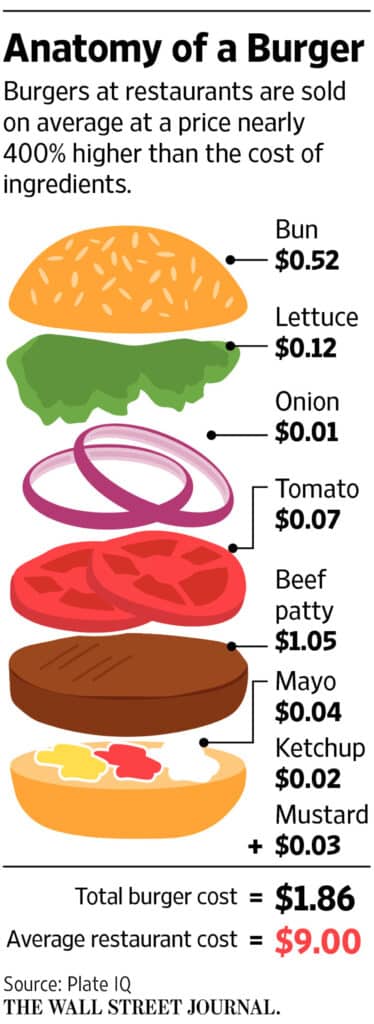
e) Legal Structure
Finally, your business overview section should specify what type of business structure you want. Is this a corporation or a partnership (LLC)? Who are the investors? How much equity percentage do they own? Is there a Board of Directors? If so, whom? Do they have experience in the industry?
3. Fast Food Market Overview
A complete understanding of the market where you want to operate is important for the success of your business. That’s also something you must showcase in your business plan.
For example, if you are trying to sell high-calorie burgers to a health-conscious target audience, you will probably fail. Similarly, if you are trying to sell high-priced food items to day laborers with very limited income, they will most likely not buy from you.
Therefore, you must cover here 3 important areas:
- Industry Size & Growth: how big is the fast food industry in your area? What is its growth rate (or decline rate) and what are the factors contributing to its growth or decline?
- Competition Overview: how many competitors are there? How do they compare vs. your business? How can you differentiate yourself from them?
- Customer Analysis: who is your target audience? What type of fast food products do they prefer? How regularly do they eat fast food? How much do they spend on fast food per month?
a) Fast Food Industry Size & Growth
How big is the fast food industry in the US?
According to Zippia, the US fast food industry market size in 2021 was worth $297 billion, and is expected to grow at a CAGR of 5.1% over 2020-2027.
When it comes to the number of fast food restaurants, there were 197,653 in 2021: that’s an average annual turnover of $1,500,000 per restaurant..!
How big is the fast food industry in your area?
After getting a clear picture of the fast food industry in the US as a whole, narrow down to your location. Yet, you may not find this information anywhere (at least not for free). In that case, you can use our guide to estimate the TAM, SAM, and SOM for your business. Here is an example of how to do it:
We know the average annual turnover per fast food restaurant is around $1.5 million. Therefore, if the area where you want to open your fast food restaurant has 30 competitors (say, in a 10-mile radius), you can assume the fast food industry in your area is worth approximately $45 million.
How fast is the fast food industry growing in your area?
Looking at public information online, we know that the US fast food market grew from $209 billion in 2011 to $295 billion in 2019: that’s an average of 5.14% per year..!
What about where you live? US national averages can be a great addition to your business plan, yet they don’t necessarily help to assess the fast food industry where you want to open your store.
For example, the industry might be growing in the US, but declining in your region for a number of reasons (decreasing population or disposable income, etc.).
As you likely won’t find this information online, you can instead rely on the number of fast food restaurants to calculate the average growth rate of the industry in your area.
For example, if the region had only 21 fast food restaurants in 2011 and 30 in 2019, you can assume that the average annual growth rate of the fast food industry in the area is 5.4%, in line with the US average.

b) Fast Food Competition Overview
Studying your competitors’ business models is vital. You need to understand what makes them successful or why they fail. A clear understanding of their fast food offerings, marketing strategies, etc., will allow you to provide a better service.
If your competitors are offering nearly the same products & services, then what is their market share and how do they market their products & services to attract new customers?
It is always a good idea to do some research (if necessary, physically visit your competitors without revealing your business intentions) and create a comparative table summarizing their product & service offerings, marketing strategies, target audience, etc.
Here is a sample table that you can use:
| Competitor #1 | Competitor #2 | Competitor #3 | |
|---|---|---|---|
| Location | xx | xx | xx |
| Business model (and restaurant type) | Franchise (Pizza Hut) | Individually owned (Burgers) | Individually owned (Sandwiches) |
| Products | xx | xx | xx |
| Marketing strategy | Social media Loyalty rewards Local business listing | Online PPC ads Social media Print media | Social media Local business listing Print media |
| Google rating | 4.4 (850+) | 4.8 (360+) | 4.5 (430+) |
| Pricing | $ | $$$ | $$ |
| Restaurant size (dining area) | 1,200 sq. ft. | 2,100 sq. ft. | 1,700 sq. ft. |
| Tables | None (delivery only) | 20 | 25 |
| Staff (peak time) | 4 | 8 | 6 |
Fast Food Restaurant SWOT Analysis
SWOT stands for Strength, Weakness, Opportunities, and Threats. This analysis will help lenders and investors better understand how you compare vs. competitors as well as the overall risk and reward profile of your business.
Here is a sample that you can use as a reference:
- Strengths: Worked as a regional manager at a leading taco & burrito chain for 5 years; master’s degree in business administration from a reputed institute
- Weaknesses: Startup cost, no initial brand reputation
- Opportunities: Industrial and office area with a high concentration of day laborers, contract workers, and immigrants with low income looking for low-priced yet filling food
- Threats: Well-established brands are introducing a specialized line of low-cost food offerings to capture the target market

c) Customer Analysis
This is the sub-section where you will provide a detailed analysis of your target audience.
Some important points that you must include in your customer analysis include:
- Age and gender distribution (you can get local demographic data from census.gov)
- Average monthly income and disposable income
- Average spend on fast food (per month or per year)
- Types of fast foods they prefer
- The expected price range for fast food
- Inclination towards loyalty programs & free perks
- Things they dislike about existing fast food restaurants and what they expect to be improved
You can add as many data points as required to validate your business decision. The idea here is to display your deep understanding of the target audience and their needs, preferences, and expectations. This knowledge can help you to tailor your products & services to attract new customers.
4. Sales & Marketing Strategy
This is the segment where you outline your customer acquisition strategy. Try to answer the following questions:
- What is your Unique Selling Proposition (USP)?
- What are the different marketing strategies you will use?
- How do you intend to track the success of your marketing strategy?
- What is your CAC or customer acquisition cost?
- What is your marketing budget?
- What introductory promos and offers do you intend to provide for attracting new customers?
What marketing channels do fast food restaurants use?
A few marketing channels that fast food restaurants typically use are:
- PPC ads, Instagram / Facebook ads, etc.
- Social media content
- Billboards & signages
- Loyalty programs
- Pamphlets & flyers
It is not necessary to use all channels. Instead, you can start by focusing on a few of them, and include other marketing strategies later.
Also, you must have a fair and nearly accurate estimate of your marketing budget. Failure to display a well-planned and adequate budget for advertising and marketing may lead to investors losing confidence.
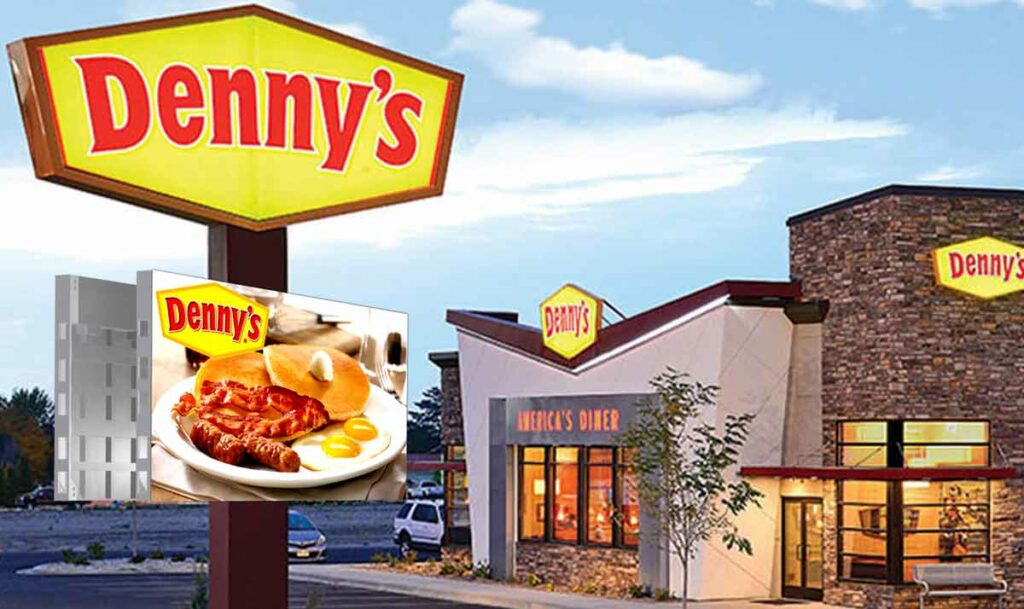
What is your Unique Selling Proposition (USP)?
In other words, how do you differentiate yourself vs. competitors? This is very important as you might need to win customers from competitors.
A few examples of USPs are:
- Product quality: you may be offering higher quality products vs. your competitors, for example, burger buns made from fertilizer-free organically grown wheat
- Location: your restaurant may be located closer to your target audience and/or closer to a busy street where new potential customers can see your signage
- Price: your products may be cheaper vs. competitors
- Uniqueness: you may be the only taco restaurant (in an area with high population of Mexican migrants) that uses authentic Mexican-style soft corn tortillas
Your USP will depend on your business model, competitor analysis, and target audience. Whatever your USP be, it should be clear and appeal to your target audience.
5. Management & People
You must address 2 things here:
- The management team and their experience
- The organizational structure: different team members and who reports to whom
Management
Small businesses often fail because of managerial weaknesses. Thus, having a strong management team is vital. Highlight the experience and education of senior managers that you intend to hire to oversee your fast food business.
First, describe their duties, responsibilities, and roles. Also, highlight their previous experience and explain how they succeeded in their previous roles.
If they have specialized training and experience (such as a professional degree in business management, managerial experience in a leading fast food chain, a proven track record of designing & executing successful marketing campaigns for famous restaurants leading to a measurable increase in ROI, etc.), add that information.
Organization Structure
Even if you haven’t already hired a general manager, administrative staff, busboy, cashier, chef, kitchen helpers, and other relevant staff members, you must provide a chart of the organizational structure defining hierarchy and reporting lines.
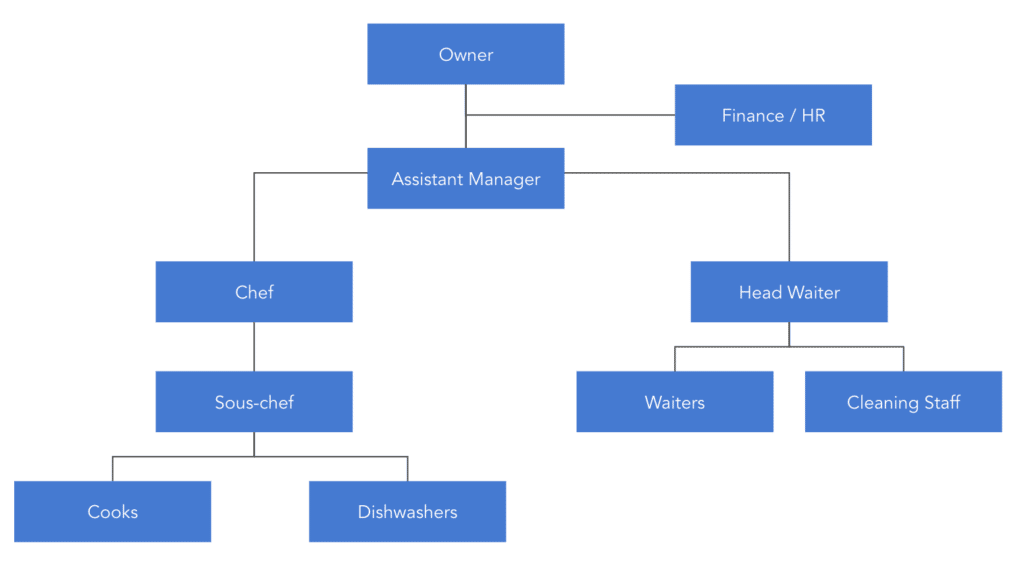
6. Financial Plan
The financial plan is perhaps, with the executive summary, the most important section of any business plan for a fast food.
Indeed, a solid financial plan tells lenders that your business is viable and can repay the loan you need from them. If you’re looking to raise equity from private investors, a solid financial plan will prove them your fast food is an attractive investment.
There should be 2 sections to your financial plan section:
- The startup costs of your project (if you plan to start a new fast food, renovate your restaurant, etc.)
- The 5-year financial projections
a) Startup Costs
Before we expand on 5-year financial projections in the following section, it’s always best practice to start with listing the startup costs of your project. For a fast food, startup costs are all the expenses you incur before you open your fast food and start making sales. These expenses typically are:
- The leasing deposit for the space (if you rent) or to buy the real estate (if you buy)
- Renovations and improvements
- Equipment & appliances
- Furniture & tableware
Of course, the startup costs depend on a number of factors, like the size of your restaurant, its location, the facilities, the menu, etc.
On average, it costs $89,000 to $266,000 to open a casual pizzeria (1,500 sq. ft.) in the US. In comparison, a 150-seats restaurant will cost more: $484,000 to $685,000.
Note that these costs are for illustrative purposes and may not be fully relevant for your business. For more information on how much it costs to open and run a restaurant, read our article here.
b) Financial Projections
In addition to startup costs, you will now need to build a solid 5-year financial model for your fast food restaurant.
Your financial projections should be built using a spreadsheet (e.g. Excel or Google Sheets) and presented in the form of tables and charts in the business plan of your fast food.
As usual, keep it concise here and save details (for example detailed financial statements, financial metrics, key assumptions used for the projections) for the appendix instead.
Your financial projections should answer at least the following questions:
- How much revenue do you expect to generate over the next 5 years?
- When do you expect to break even?
- How much cash will you burn until you get there?
- What’s the impact of a change in pricing (say 15%) on your margins?
- What is your average customer acquisition cost?
You should include here your 3 financial statements (income statement, balance sheet and cash flow statement). This means you must forecast:
- The number of covers (customers or orders) over time ;
- Your expected revenue ;
- Operating costs to run the business ;
- Any other cash flow items (e.g. capex, debt repayment, etc.).
When projecting your revenue, make sure to sensitize pricing, cost of raw materials (food supplies) and your sales volume. Indeed, a small change in these assumptions may have a significant impact on your revenues and profits.

7. Use of Funds
This is the last section of the business plan of your fast food restaurant. Now that we have explained what your fast food’s business model and concept are, what is your menu, your marketing strategy, etc., this section must now answer the following questions:
- How much funding do you need?
- What financial instrument(s) do you need: is this equity or debt, or even a free-money public grant?
- How long will this funding last?
- Where else does the money come from? If you apply for a SBA loan for example, where does the other part of the investment come from (your own capital, private investors?)
If you raise debt:
- What percentage of the total funding the loan represents?
- What is the corresponding Debt Service Coverage Ratio?
If you raise equity
- What percentage ownership are you selling as part of this funding round?
- What is the corresponding valuation of your business?
Use of Funds
Any business plan for a fast food restaurant should include a clear use of funds section. This is where you explain how the money will be spent.
Will you spend most of the loan / investment in paying your employees’ salaries and the inventory? Or will it cover mostly the cost for the lease deposit and the renovation?
For the use of funds, we also recommend using a pie chart like the one we have in our financial model template where we outline the main expenses categories as shown below.


